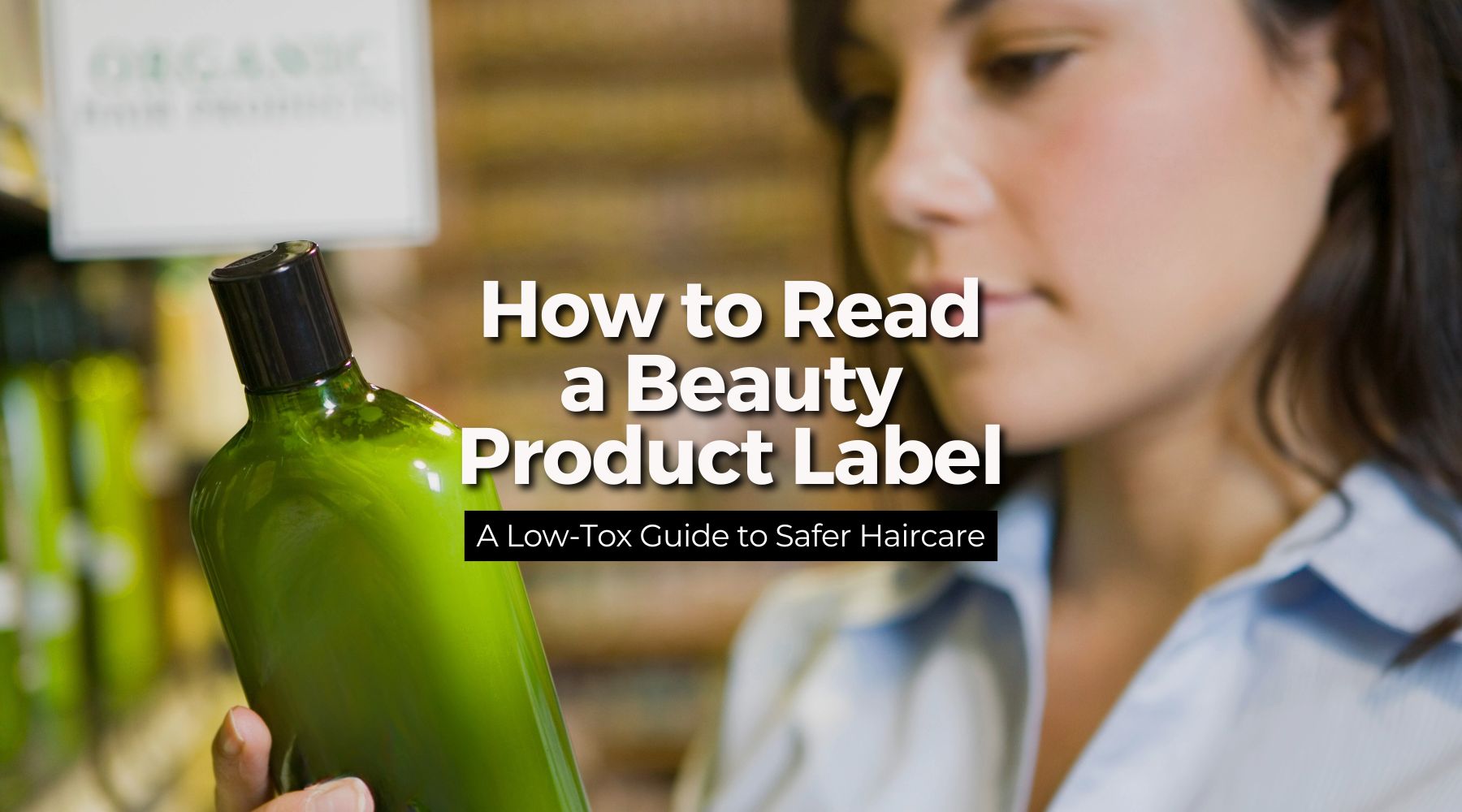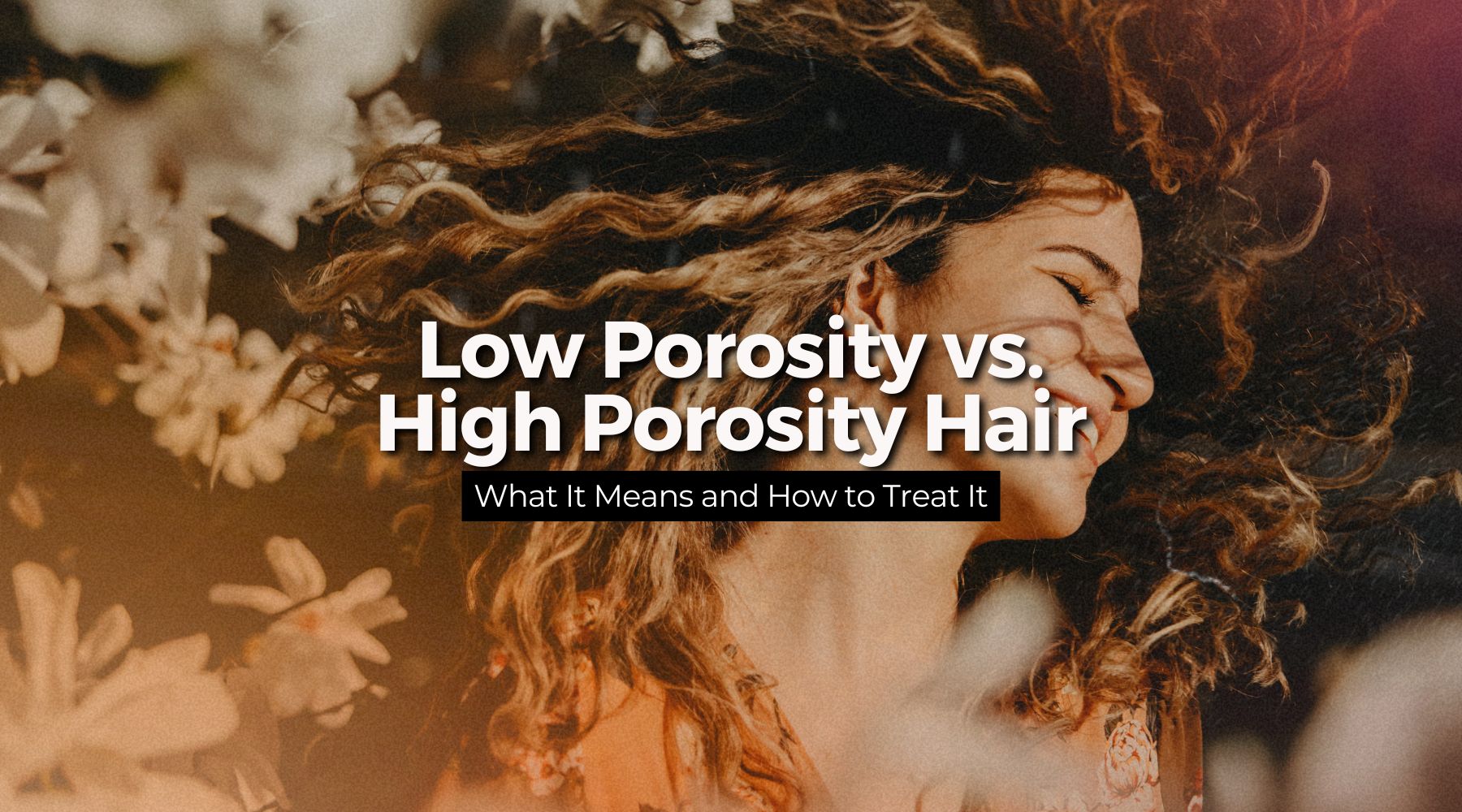How to Read a Beauty Product Label: A Low-Tox Guide to Safer Haircare

Ever stood in the haircare aisle, flipping bottles around like you're deciphering a code? You’re not alone. Learning how to read a shampoo or conditioner label is one of the most empowering steps in moving toward a low-tox lifestyle and it doesn’t require a chemistry degree.
This guide will walk you through the essentials so you can shop with more confidence, understand what you're really putting on your scalp, and make cleaner choices for your health, your hair, and the planet.
The First Five Ingredients Tell You the Most
The ingredients listed at the top make up the bulk of the formula. If you're reaching for a moisturising shampoo and the first few ingredients are all water and synthetic detergents, it's time to look elsewhere.
Look for nourishing ingredients like:
-
Aloe Vera Leaf Juice – soothing, hydrating and great for the scalp
-
Coconut Oil or Derivatives – gentle cleansers and moisturisers
-
Plant Oils – like argan, jojoba, or olive for conditioning
Avoid if possible:
-
Sodium Lauryl Sulfate (SLS) and Sodium Laureth Sulfate (SLES) – strong surfactants that can strip natural oils
-
Silicones (non-water-soluble types) – can build up on hair and scalp over time
-
Parabens – synthetic preservatives that have raised safety concerns
Common Ingredient Terms and What They Really Mean
Here’s a cheat sheet for terms you’ll often see:
-
Fragrance / Parfum
This could mean anything from a blend of essential oils to a synthetic cocktail of hundreds of undisclosed compounds. At BodFood, our fragrances are either essential oil-based or certified safe through EcoMundo for EU cosmetic compliance.
-
Preservatives
Yes, even natural products need preservatives. Look for gentler options like phenoxyethanol, ethylhexylglycerin, or sodium benzoate, these are considered safe and effective.
What Are the Ingredients to Avoid?
There are a few common culprits often flagged in low-tox circles:
-
Artificial fragrances with phthalates
-
Formaldehyde releasers like DMDM Hydantoin
-
Petrolatum / Mineral oil – occlusive and non-biodegradable
-
Non-water-soluble silicones – that coat the hair and block moisture getting in
Not All “Natural” Is Better all the time, Here’s Why
It’s a myth that everything natural is better. Poison ivy is natural, but you wouldn’t want it in your conditioner.
Clean formulas aim for effective, low-tox formulations, using a blend of certified organic botanicals, safe man-made, and ingredients that are biodegradable and skin-compatible. It’s about balance, not extremes.
What If You Don’t Recognise the Name?
Many safe ingredients just sound complex because of INCI labelling rules. For example:
-
Cetearyl Alcohol – not drying like it sounds, it’s a fatty alcohol that softens and conditions hair
-
Cocamidopropyl Betaine – a coconut-derived surfactant, not a harsh detergent
-
Behentrimonium Methosulfate – a mild conditioning agent from rapeseed oil, despite the intimidating name
Ingredient Awareness is Empowering
Reading labels isn’t about being perfect. Every time you choose a product that aligns with your values whether that’s sustainability, scalp health, or avoiding harsh chemicals, you’re making a difference.
BodFood is here to support your clean beauty journey with transparency and formulations you can trust. If you’re ever unsure about an ingredient, ask us, we love a good ingredient deep-dive.
Explore our range of shampoos and conditioners made with low-tox, clean ingredients, consciously formulated in Australia.





Comments